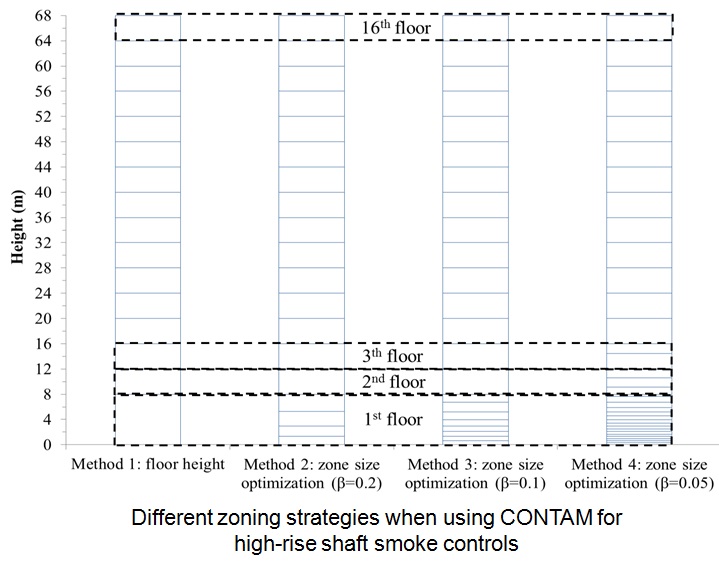- 1. Building Airflow and Thermal Management
- CityFFD - City Fast Fluid Dynamics
- CityBEM - City Building Energy Model and Whole-building energy analysis
- Built Environment Scaling and Similarity with 3D Printing Applications
- Natural Ventilation Potential Map
- Forecasting Built Environment by Numerical Weather Prediction Models
- Smart Air Curtains
- Sub-Scale Model Experiment and Dimensionless Design
- Modular Growing Bed Ventilation System Design With SLA(Stereolithography Apparatus) 3D Printing Technology
- 2. Building Fire Protection and Smoke Management
- Forecasting Fire Smoke Safety
- High-rise Fire Smoke Management
- Modeling and Sub-scale Experiments
- People
High-rise Building Fire Smoke Management
Student: Dahai (Darren) Qi, PhD Candidate (co-supervised with Dr. Radu Zmeureanu)
Sponsor: Natural Science and Engineering Research Council of Canada (NSERC) Discovery Grants
- Dahai, Q, L. Wang and R. Zmeureanu. 2013. An analytical model of heat and mass transfer through high-rise shafts during fires. Submitted to International Journal of Heat and Mass Transfer.
- Dahai, Q, L. Wang and R. Zmeureanu. 2013. Verification of a multizone network model for modeling coupled thermal airflows in buildings. Submitted to Energy and Buildings.
Research Highlights:
1. Analytical models of smoke spread in high-rise buildings
- An analytical model was developed for the coupled fire smoke heat and mass transfer through shafts of high-rise buildings.
- A hand-calculation procedure was proposed to obtain the solution to the analytical model.
- Smoke temperatures and pressures, and shaft wall temperatures all depend on a non-dimensional parameter.
- The analytical solutions were plotted in non-dimensional forms, which can be used for designs of smoke control systems in high-rise buildings

2. An updated numerical model of whole-building airflow and thermal model - CONTAM97R
- CONTAM97R belongs to the family of CONTAM, a computer program developed for about 30 years at the US NIST.
- Energy balance model was added to CONTAM97R and is being tested for different applications of whole-building airflow and termal simulations.
- CONTAM97R here is applied to the modeling of fire smoke spread in high-rise buildings.

3. Integration of FDS and CONTAM97R
- Fire dynamics simulation (FDS) is a well-known LES computer program for building fire dynamics simulations
- We are integrating FDS with CONTAM97R for whole-building fire and smoke simulations by jusing Java scripts.